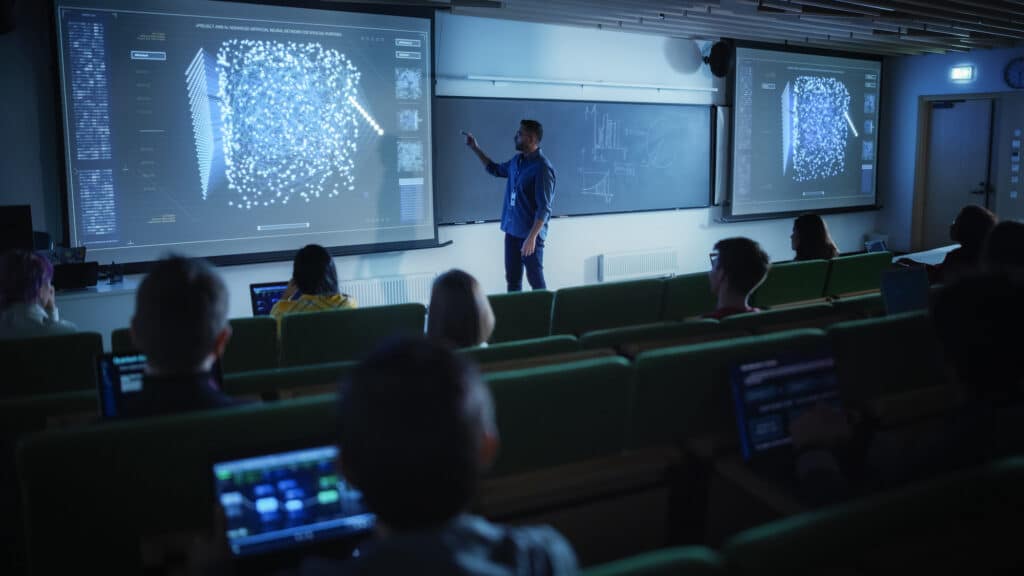
Artificial Intelligence in Higher Education: The Current State
The integration of artificial intelligence (AI) into higher education (HE) has seen a significant surge in recent years, with a proliferation of new AI tools. This post provides a comprehensive examination of AI in HE, shedding light on emerging trends, gaps, and transformative possibilities.
The Rise of AI in Higher Education
The urgency to harness AI’s capabilities for educational improvement is reflected in the exponential growth of publications related to AI in HE, which surged nearly two to three times in 2021 and 2022 compared to previous years. Interestingly, the geographical landscape of research has shifted, with China now leading in the number of AIEd publications, surpassing the United States.1
Who Benefits from AI in Higher Education?
- Students: Undergraduate students were the primary focus, constituting 72% of the studies. AI applications spanned various subject domains, including language learning (writing, reading, and vocabulary acquisition). Personalized learning experiences, adaptive systems, and intelligent tutoring systems were key areas where AI made a difference for students.1
- Instructors: Approximately 17% of the studies targeted instructors. AI assisted instructors in assessment and evaluation, providing prompt feedback, and developing assessments. It also facilitated predictive analytics to anticipate student success. The shift toward AI as an assistant for instructors highlights its potential to alleviate administrative burdens and enhance teaching practices.1
- Managers and Administrators: While fewer studies (11%) focused on managers and administrators, AI played a crucial role in managing student learning. From optimizing course schedules to monitoring student progress, AI offered efficiency gains. Its impact on administrative decision-making warrants further exploration.1
AI Applications in Higher Education
Grounded coding revealed five primary usage codes for AI in HE:
- Assessment/Evaluation: AI streamlined grading, assessment design, and feedback delivery. It automated routine tasks, allowing instructors to focus on pedagogical interactions.
- Predicting: AI models predicted student outcomes, identifying at-risk learners early. These insights informed targeted interventions, contributing to improved retention rates.
- AI Assistant: Chatbots and virtual teaching assistants supported students and instructors. They answered queries, managed course materials, and facilitated communication.
- Intelligent Tutoring System (ITS): AI-powered ITS adapted instruction to individual learning needs. It personalized learning pathways, catering to diverse student profiles.
- Managing Student Learning: AI optimized administrative processes, from enrollment management to resource allocation. Its role in enhancing institutional efficiency cannot be overstated.1
Challenges and Considerations
While the promise of AI is exciting, challenges persist:
- Ethical Use of AI: Ensuring fairness, transparency, and privacy in AI algorithms remains critical.
- Faculty Training and Adoption: Faculty need training to effectively integrate AI tools into teaching practices. Overcoming resistance to change is essential.
- Data Quality and Integration: High-quality data is crucial for AI success. Institutions must invest in data infrastructure and interoperability.
- Balancing Automation and Human Touch: While automation improves efficiency, maintaining human connections is equally vital.
The Future Landscape
As AI continues to shape higher education, intentional adoption and thoughtful implementation are paramount. Here’s what lies ahead:
- Personalized Learning: AI will adapt instruction to diverse learner profiles, ensuring tailored learning experiences.
- Predictive Analytics: AI will anticipate student needs, providing timely interventions and enhancing retention rates.
- Efficient Administration: AI will optimize administrative processes, guiding decisions on course offerings and resource allocation.
Conclusion
AI is no longer a distant promise—it is woven into the fabric of higher education. As we navigate this evolving landscape, let us harness AI’s potential to empower learners, enhance teaching, and advance knowledge. The journey toward AI-infused education is as important as the destination. AI is not a threat but a tool—a beacon guiding us toward a brighter educational future. 🌟📚🤖
References:
- Crompton, H., & Burke, D. (2023). Artificial intelligence in higher education: The state of the field. International Journal of Educational Technology in Higher Education, 20(1), 221
